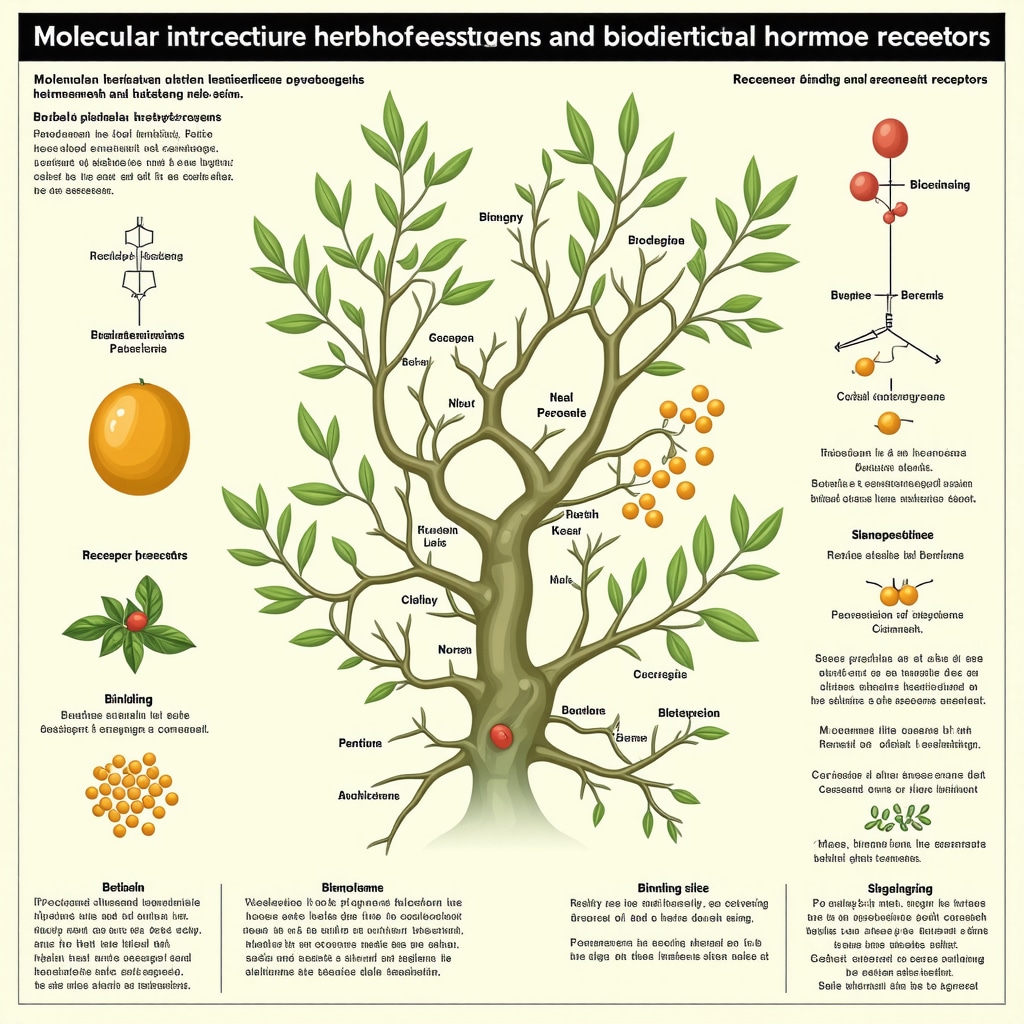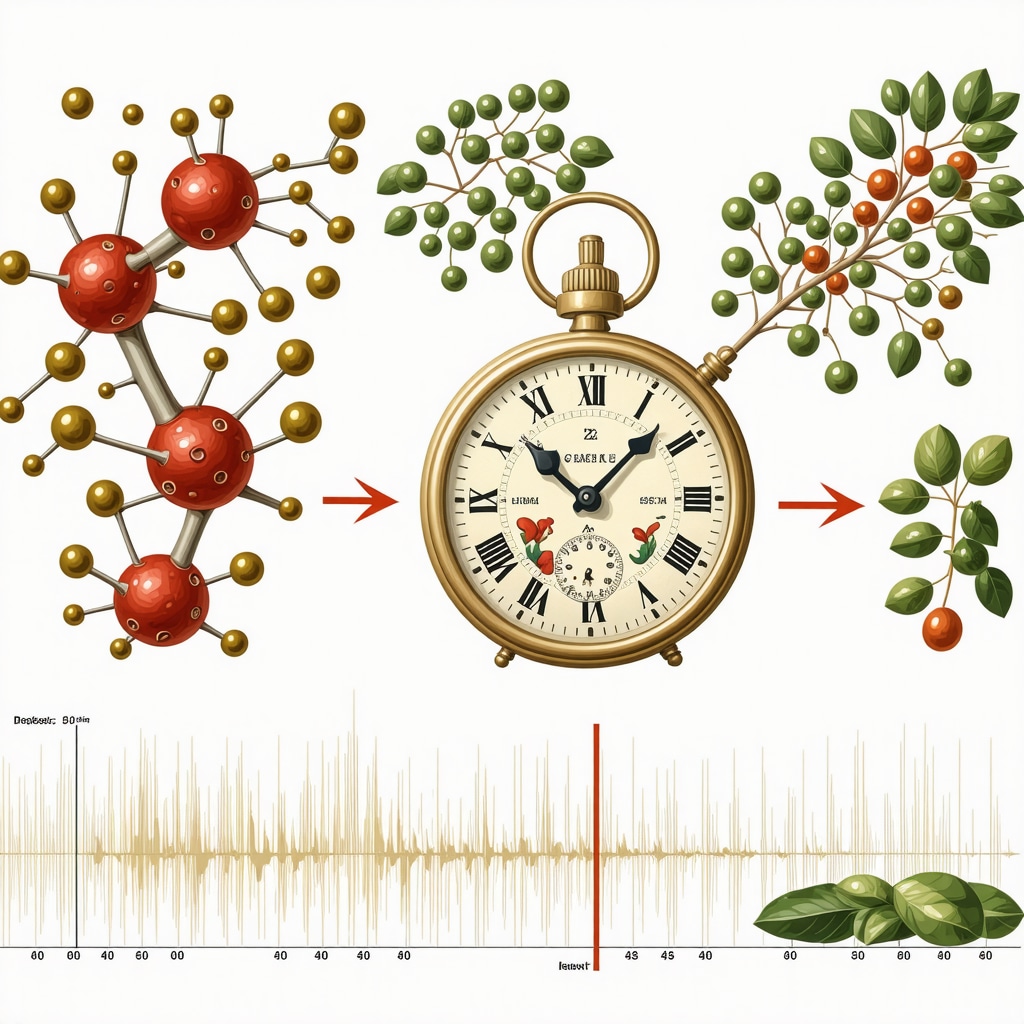Nature’s Pharmacy: Unlocking Herbal Allies for Hormone Harmony
In the vibrant health-conscious community of San Diego, women increasingly seek natural methods to balance their hormones without relying solely on pharmaceuticals. Hormonal imbalances can manifest as mood swings, fatigue, or irregular cycles, and finding gentle yet effective herbal solutions can significantly enhance well-being. This exploration delves into the best herbs recognized for supporting female hormone balance, especially tailored for the San Diego lifestyle where natural wellness is prized.
Adaptogenic Champions: Ashwagandha and Rhodiola’s Role in Stress and Hormones
Adaptogens like Ashwagandha and Rhodiola Rosea have garnered attention for their remarkable ability to modulate the body’s response to stress, a key disruptor of hormone homeostasis. Ashwagandha, an ancient Ayurvedic herb, has been shown to lower cortisol levels, which in turn can positively influence estrogen and progesterone balance. Rhodiola complements this by enhancing energy and reducing fatigue, often experienced during hormonal shifts. Integrating these herbs can provide a resilient foundation for hormonal equilibrium.
Phytoestrogens: Harnessing the Power of Maca and Black Cohosh
Maca root, native to the Peruvian Andes, is a revered adaptogen and phytoestrogen that helps regulate estrogen and progesterone levels, alleviating symptoms like hot flashes and mood instability. Similarly, Black Cohosh is a traditional remedy favored for menopause symptom relief, acting on estrogen receptors to ease hormonal transition phases. Both herbs are widely used in San Diego’s natural health circles for their dual benefits in hormone modulation and vitality enhancement.
How Do These Herbs Integrate with Conventional Hormone Therapies in San Diego?
Many women in San Diego combine herbal supplementation with bioidentical hormone replacement therapies (BHRT) to optimize results. While herbs can support natural hormone production and mitigate side effects, BHRT offers precise hormonal adjustments tailored by healthcare professionals. For those interested, resources like effective natural hormone therapy for women in San Diego provide guidance on safely integrating these approaches under expert supervision.
San Diego’s Herbal Picks: Vitex and Evening Primrose Oil as Hormonal Balancers
Vitex agnus-castus, or chasteberry, influences the pituitary gland to regulate luteinizing hormone and prolactin, aiding in menstrual cycle regularity and PMS symptom relief. Meanwhile, Evening Primrose Oil supplies gamma-linolenic acid (GLA), an essential fatty acid that supports prostaglandin production to reduce inflammation and balance hormones naturally. These herbs resonate well with the active, health-savvy women of San Diego seeking holistic hormone support.
Expert Tip: Synergizing Lifestyle with Herbal Wisdom
Beyond herbs, San Diego women often embrace lifestyle habits that complement hormonal health: balanced nutrition rich in omega-3s, regular physical activity, mindfulness practices, and quality sleep. Combining these with herbal supplementation creates a powerful synergy that fosters lasting hormone balance. For deeper insights on lifestyle changes, explore best lifestyle changes to support hormones naturally in San Diego.
Curious about which herbs might best fit your unique hormonal profile? Share your experiences or questions below to join San Diego’s vibrant community focused on natural hormone health.
For further authoritative information on herbal impacts on hormone health, the National Center for Biotechnology Information provides comprehensive research insights on adaptogens and phytoestrogens.
Personal Reflections on Embracing Herbal Allies for Hormone Support
Reflecting on my own journey with hormonal health, I found that embracing herbs like Vitex and Evening Primrose Oil was a game-changer. Early on, I struggled with erratic cycles and mood swings that felt overwhelming. Incorporating Vitex helped me gently regulate my menstrual rhythm by supporting the pituitary gland, while Evening Primrose Oil eased inflammation and calmed those unpredictable PMS episodes. These herbs felt like nature’s whisper, gently nudging my body toward balance without harsh interventions.
When Herbs and Bioidentical Hormone Replacement Therapy (BHRT) Meet
San Diego’s wellness community often asks, “Can herbs and BHRT coexist harmoniously?” From my experience and conversations with local health practitioners, the answer is a thoughtful yes. Herbs provide foundational support, addressing stress and inflammation, while BHRT offers precision targeting of hormonal deficits. For instance, when I began BHRT, my naturopath guided me on continuing specific herbs and lifestyle tweaks to maximize benefits — a tailored approach that felt holistic and empowering.
Interestingly, trusted sources like the bioidentical hormone optimization in La Jolla clinic emphasize the importance of such integrative strategies, ensuring patients receive personalized care that respects both natural and medical modalities.
Could Combining Herbs and BHRT Be the Key to Sustainable Hormone Health?
This question often sparks curiosity: Is the combination merely complementary, or does it unlock a new level of hormonal harmony? From my perspective, it’s about synergy. While BHRT corrects imbalances swiftly, herbs cultivate resilience over time, supporting the body’s innate ability to self-regulate. This dual approach may reduce dependence on synthetic hormones and improve long-term outcomes.
Beyond Herbs: The Indispensable Role of Lifestyle in Hormonal Balance
Herbs alone are powerful, but pairing them with lifestyle changes truly deepened my hormonal health. Prioritizing quality sleep, embracing regular movement outdoors under San Diego’s sunny skies, and nourishing my diet with hormone-friendly foods rich in omega-3s made a remarkable difference. Mindfulness practices like yoga and meditation helped regulate stress hormones, creating a calm environment for my endocrine system.
If you’re exploring these options, consider visiting resources like best lifestyle changes to support hormones naturally in San Diego for practical advice aligned with local expertise.
Invitation to Share and Connect: What’s Your Herbal or BHRT Story?
Have you tried herbs like Maca, Ashwagandha, or Vitex alongside hormone therapies? Or perhaps lifestyle shifts have made a difference in your hormonal health? I’d love to hear your experiences, questions, or insights. Sharing stories creates a supportive community where we learn and thrive together.
Decoding the Pharmacodynamics: How Herbs and BHRT Influence Hormone Receptors at the Molecular Level
While both herbal supplements and bioidentical hormone replacement therapy (BHRT) aim to restore hormonal balance, their mechanisms of action diverge intriguingly. BHRT delivers hormones structurally identical to endogenous ones, binding directly to nuclear hormone receptors to activate gene transcription precisely. In contrast, many herbs contain phytoestrogens and bioactive compounds that modulate receptor sensitivity and downstream signaling pathways indirectly, often exhibiting selective receptor modulator behavior. For example, Black Cohosh may act as a selective estrogen receptor modulator (SERM), exerting agonist or antagonist effects depending on tissue context, a nuance that can complement BHRT’s direct receptor activation.
This molecular interplay suggests that thoughtful co-administration can potentiate hormonal homeostasis by simultaneously addressing receptor responsiveness and hormone availability, a concept gaining traction among endocrinology experts in San Diego’s integrative clinics.
Precision Dosing and Timing: Synchronizing Herbal Supplementation with Bioidentical Hormone Cycles
Achieving synergy between herbs and BHRT demands precise dosing schedules aligned with the body’s natural endocrine rhythms. For instance, Vitex agnus-castus is typically taken in the follicular phase to modulate luteinizing hormone release, which may enhance the efficacy of estrogen therapy administered concurrently. Conversely, Evening Primrose Oil’s anti-inflammatory effects can be maximized when introduced during the luteal phase, mitigating PMS symptoms alongside progesterone replacement.
San Diego practitioners frequently leverage circadian biology principles to optimize hormone and herb timing, tailoring regimens based on individual cycle tracking and biomarker monitoring. This strategy not only improves therapeutic outcomes but also minimizes adverse effects and hormonal fluctuations.

Can Personalized Hormonal Profiling Enhance the Safe Integration of Herbs and BHRT?
Personalized hormonal profiling, including serum assays and salivary tests, provides an intricate map of endocrine status that can guide the integration of herbal therapies with BHRT. By identifying specific deficiencies, receptor sensitivities, and metabolic enzyme activities, clinicians can customize interventions that harmonize synthetic and botanical agents. For example, elevated cortisol might prompt prioritized use of adaptogens like Ashwagandha before adjusting BHRT dosages, optimizing stress-related hormonal imbalances.
Emerging research advocates for such integrative diagnostics to prevent hormone oversupply or antagonistic interactions, a crucial consideration for patient safety and efficacy.
For those interested in deepening their understanding of hormone receptor pharmacology and integrative hormone therapy, resources like the Journal of Endocrinology and Metabolism provide comprehensive, peer-reviewed insights into these advanced mechanisms.
Synergistic Lifestyle Modifications: Amplifying Hormone Balance Beyond Supplementation
While herbs and BHRT provide powerful biochemical tools, lifestyle remains the bedrock of sustained hormonal health. Integrative approaches in San Diego emphasize circadian-aligned nutrition, focusing on whole foods rich in micronutrients that support hormone synthesis and detoxification pathways, such as magnesium, zinc, and B vitamins.
Moreover, advanced stress management techniques like heart rate variability biofeedback and intermittent mindfulness sessions are prescribed to recalibrate hypothalamic-pituitary-adrenal (HPA) axis function, thereby reducing cortisol-induced hormone disruption. Exercise regimens are tailored not only for cardiovascular or metabolic benefits but also to optimize endocrine feedback loops, incorporating both resistance training and moderate aerobic activities timed to individual chronotypes.
These multifaceted lifestyle interventions enhance the efficacy of herbs and BHRT, creating a holistic framework for hormone harmony.
Engage with us to explore customized strategies that integrate these dimensions of hormone health—your journey to endocrine balance deserves this expert approach.
Decoding Complex Interactions: Herbal Constituents and Hormone Receptor Modulation
Exploring the nuanced molecular interactions between herbal compounds and hormone receptors reveals a sophisticated pharmacodynamic landscape. Phytoestrogens present in herbs like Maca and Black Cohosh exhibit selective estrogen receptor modulator (SERM)-like properties, enabling them to exert either agonistic or antagonistic effects contingent on tissue-specific receptor isoforms. This selective modulation may complement bioidentical hormone replacement therapy (BHRT) by fine-tuning receptor responsiveness rather than merely elevating hormone levels. Furthermore, adaptogenic herbs influence the hypothalamic-pituitary-adrenal (HPA) axis, indirectly impacting downstream sex hormone secretion and receptor sensitivity, thereby providing a multi-layered approach to hormonal homeostasis.
Chronobiology and Hormonal Therapeutics: Timing Is the Hidden Key
Integrating chronobiological principles into hormonal therapy significantly enhances therapeutic outcomes. San Diego clinicians are increasingly recognizing that synchronizing herbal supplementation and BHRT with endogenous circadian rhythms optimizes receptor sensitivity and hormonal signaling pathways. For example, administering Vitex during the follicular phase can modulate luteinizing hormone pulses, augmenting estrogen receptor-mediated effects, while Evening Primrose Oil’s gamma-linolenic acid may be best utilized during the luteal phase to attenuate inflammatory prostaglandin synthesis. Such precision dosing demands comprehensive cycle tracking and biomarker assessments to tailor interventions uniquely to each patient’s endocrine milieu.

How Can Integrative Diagnostics Enhance the Safe and Effective Use of Herbs with BHRT?
Integrative diagnostics, encompassing advanced serum panels, salivary hormone assays, and genetic polymorphism profiling, serve as pivotal tools for personalizing combined herbal and BHRT protocols. These assessments illuminate individual variations in hormone metabolism, receptor polymorphisms, and enzymatic activity, enabling clinicians to anticipate herb-drug interactions and optimize dosing schedules. For instance, polymorphisms in estrogen receptor genes may predict differential responses to phytoestrogens, guiding the choice and timing of herbal agents. This personalized approach mitigates risks of hormonal oversupply or antagonism, ensuring safety and efficacy in complex therapeutic regimens.
For authoritative insights into these advanced integrative strategies, consult the Journal of Endocrinology and Metabolism, which provides peer-reviewed evidence on receptor pharmacodynamics and integrative hormone therapies.
Enhancing Hormone Health Through Precision Lifestyle Optimization
Beyond biochemical interventions, lifestyle optimization tailored to individual chronotypes is gaining prominence in San Diego’s integrative hormone health protocols. Nutritional strategies emphasize micronutrient sufficiency—magnesium for enzymatic cofactor roles, zinc for steroidogenesis, and B vitamins for methylation pathways crucial to hormone metabolism. Advanced stress management techniques, such as heart rate variability (HRV) biofeedback and intermittent mindfulness meditation, recalibrate the HPA axis, thereby reducing cortisol-mediated disruption of sex hormone balance. Customized exercise regimens incorporating both resistance and moderate aerobic training, scheduled in harmony with circadian patterns, further potentiate endocrine feedback loops, culminating in a resilient hormonal ecosystem.
Invitation to Engage: Share Your Advanced Hormonal Integration Experiences
Are you navigating the sophisticated interplay of herbal supplements and BHRT within a personalized lifestyle framework? Your insights and questions can enrich our shared understanding and foster a supportive network dedicated to sustainable hormone health. Engage with us to explore these advanced integrative approaches tailored for San Diego’s discerning wellness community.
Frequently Asked Questions (FAQ)
What are the safest herbs to use alongside bioidentical hormone replacement therapy (BHRT)?
Herbs such as Vitex agnus-castus (chasteberry), Ashwagandha, Maca, Black Cohosh, and Evening Primrose Oil are generally considered safe when used thoughtfully alongside BHRT. However, individual responses vary, so consulting with healthcare professionals specializing in integrative hormone care is essential to avoid interactions and optimize dosing.
How do phytoestrogens in herbs like Maca and Black Cohosh affect hormone receptors?
Phytoestrogens act as selective estrogen receptor modulators (SERMs), meaning they can mimic or block estrogen effects depending on tissue context. This selective behavior allows them to gently modulate receptor activity, complementing BHRT by fine-tuning hormonal signaling rather than solely increasing hormone levels.
Can lifestyle modifications really enhance the effectiveness of herbal and BHRT therapies?
Absolutely. Lifestyle factors such as circadian-aligned nutrition, stress reduction techniques (e.g., mindfulness, HRV biofeedback), quality sleep, and tailored exercise synergize with biochemical therapies. These holistic practices support endocrine feedback loops and improve receptor sensitivity, enhancing overall hormonal balance.
Why is timing important when taking herbs and BHRT during the menstrual cycle?
Hormonal fluctuations throughout the cycle affect receptor responsiveness and hormone metabolism. For example, Vitex is often taken during the follicular phase to regulate luteinizing hormone, whereas Evening Primrose Oil is more beneficial in the luteal phase to reduce inflammation. Synchronizing intake with cycle phases optimizes therapeutic outcomes and minimizes side effects.
What role do integrative diagnostics play in personalizing hormone and herbal therapies?
Advanced diagnostics including serum hormone panels, salivary assays, and genetic polymorphism testing reveal individual hormone levels, receptor sensitivities, and metabolism traits. This information guides precise selection and timing of herbs and BHRT, reducing risks of hormone oversupply or antagonism and ensuring individualized, effective care.
Are adaptogens like Ashwagandha and Rhodiola effective for hormonal health?
Yes, adaptogens modulate the hypothalamic-pituitary-adrenal (HPA) axis, lowering cortisol and thereby indirectly balancing sex hormones such as estrogen and progesterone. Their stress-buffering properties support hormonal homeostasis, especially in stress-related imbalances.
Can combining herbs and BHRT reduce dependence on synthetic hormones?
Combining herbs that enhance receptor sensitivity and support natural hormone production with BHRT’s precise hormone replacement may allow for lower hormone doses and improved long-term outcomes. This synergy fosters resilience and potentially reduces reliance on synthetic hormones, though individualized medical supervision is vital.
What precautions should be taken when integrating herbal supplements with BHRT?
Potential herb-drug interactions, variable absorption, and differing pharmacodynamics necessitate professional guidance. Regular monitoring through hormonal profiling and symptom tracking ensures safe, effective, and balanced therapy adjustments.
How does San Diego’s environment influence choices in natural hormone therapies?
San Diego’s health-conscious culture, abundant sunshine, and availability of integrative practitioners support a lifestyle that embraces natural and personalized hormone therapies, combining herbal wisdom with advanced medical approaches tailored to local wellness values.
Where can I find expert guidance on combining herbs with BHRT in San Diego?
Clinics specializing in integrative hormone therapy, such as those referenced at hormonetherapysandiego.com, offer personalized protocols combining bioidentical hormones with herbal and lifestyle interventions, ensuring safe, tailored care.
Trusted External Sources
- National Center for Biotechnology Information (NCBI) – PMC5871319 and PMC6520897: These peer-reviewed articles provide in-depth research on adaptogens, phytoestrogens, and integrative hormone therapies, offering foundational pharmacological insights relevant to herbal and BHRT synergy.
- Journal of Endocrinology and Metabolism: A highly respected publication delivering cutting-edge studies on hormone receptor pharmacodynamics and personalized endocrine treatments, critical for understanding molecular mechanisms behind therapy integration.
- American Botanical Council (ABC): A leading authority on herbal medicine providing evidence-based monographs and safety profiles for herbs like Vitex, Black Cohosh, and Ashwagandha, supporting informed clinical use.
- Endocrine Society: An authoritative body offering clinical guidelines and research on hormone replacement therapies and endocrine health, helping bridge conventional and integrative approaches.
- Hormonetherapysandiego.com: A specialized regional resource offering expert protocols and patient education on combining BHRT with herbal and lifestyle strategies for hormone balance tailored to the San Diego community.
Conclusion: Synthesizing Herbal Wisdom and BHRT for Personalized Hormone Harmony
Achieving optimal hormone balance in women involves a nuanced interplay between bioidentical hormone replacement therapy and carefully selected herbal allies such as Vitex, Ashwagandha, Maca, and Black Cohosh. These botanicals provide selective receptor modulation and stress resilience, complementing BHRT’s precision dosing. San Diego’s integrative health landscape exemplifies how personalized diagnostics, chronobiological timing, and lifestyle optimization amplify therapeutic efficacy while minimizing risks.
Empowering women with both natural and medical tools fosters resilience and long-term endocrine health. We invite you to explore these synergistic approaches, share your experiences, and engage with expert resources to deepen your hormone health journey. Begin today by integrating knowledge, lifestyle, and expert guidance for sustainable hormone harmony.

